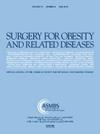青少年减肥手术的结果:肝脏疾病。
IF 3.5
3区 医学
Q1 SURGERY
引用次数: 0
摘要
随着小儿肥胖率的不断上升,代谢功能障碍相关性脂肪肝(MASLD)在美国儿童中的发病率也在不断增加。因此,代谢和减肥手术(MBS)已成为公认的治疗肥胖症的方法,并被美国儿科学会推荐使用。虽然众所周知代谢与减肥手术可以改善许多与肥胖相关的并发症,如高血压和 2 型糖尿病,但人们对其治疗 MASLD 的效果却知之甚少。这篇文章通过组织病理学、血清标志物和放射影像学测量,回顾了MBS对重度肥胖青少年肝病病程的影响。丙氨酸转氨酶(ALT)肝酶、肝细胞脂肪变性率、组织病理学纤维化程度以及计算机断层扫描和磁共振成像显示的肝脏脂肪含量均有所改善。基线值较高和/或活检证实的脂肪性肝炎阶段较高的患者,ALT 的改善幅度更大。活检证实的 MASLD 和代谢功能障碍相关性脂肪性肝炎(MASH)甚至可以完全消失,但纤维化在 MBS 术后 12 个月内不会完全消退。为了更好地了解小儿MASLD在接受MBS治疗后的结果,在MBS治疗后12个月后,对纤维化患者进行更多的纵向放射学数据和肝脏组织学检查将具有参考价值。本文章由计算机程序翻译,如有差异,请以英文原文为准。
Outcomes of adolescent bariatric surgery: liver disease
The prevalence of metabolic dysfunction–associated steatotic liver disease (MASLD) is increasing among children in the United States as pediatric obesity rates continue to rise. As such, metabolic and bariatric surgery (MBS) has become a more recognized option for treatment of obesity and has been recommended by the American Academy of Pediatrics. Although MBS is known to improve many obesity-associated comorbidities, such as hypertension and type 2 diabetes, less is known about its effect as a treatment for MASLD. This article reviewed the impact MBS has on the course of liver disease as measured by histopathology, serum markers, and radiographic imaging, among adolescents with severe obesity. Improvements were seen in alanine transaminase (ALT) liver enzymes, rates of hepatocyte steatosis, and degree of fibrosis on histopathology, and fat content in the liver on computed tomography and magnetic resonance imaging. Greater improvements in ALT were seen in patients with higher baseline values and/or a higher stage of biopsy-confirmed steatohepatitis. Biopsy-proven MASLD and metabolic dysfunction–associated steatohepatitis (MASH) have even been shown to disappear completely, but fibrosis does not completely resolve by 12 months post-MBS. To better understand the outcome of pediatric MASLD following MBS treatment, more longitudinal radiographic data and liver histology in patients with fibrosis would be informative beyond 12 months post-MBS.
求助全文
通过发布文献求助,成功后即可免费获取论文全文。
去求助
来源期刊
CiteScore
6.70
自引率
12.90%
发文量
570
审稿时长
56 days
期刊介绍:
Surgery for Obesity and Related Diseases (SOARD), The Official Journal of the American Society for Metabolic and Bariatric Surgery (ASMBS) and the Brazilian Society for Bariatric Surgery, is an international journal devoted to the publication of peer-reviewed manuscripts of the highest quality with objective data regarding techniques for the treatment of severe obesity. Articles document the effects of surgically induced weight loss on obesity physiological, psychiatric and social co-morbidities.

 求助内容:
求助内容: 应助结果提醒方式:
应助结果提醒方式:


